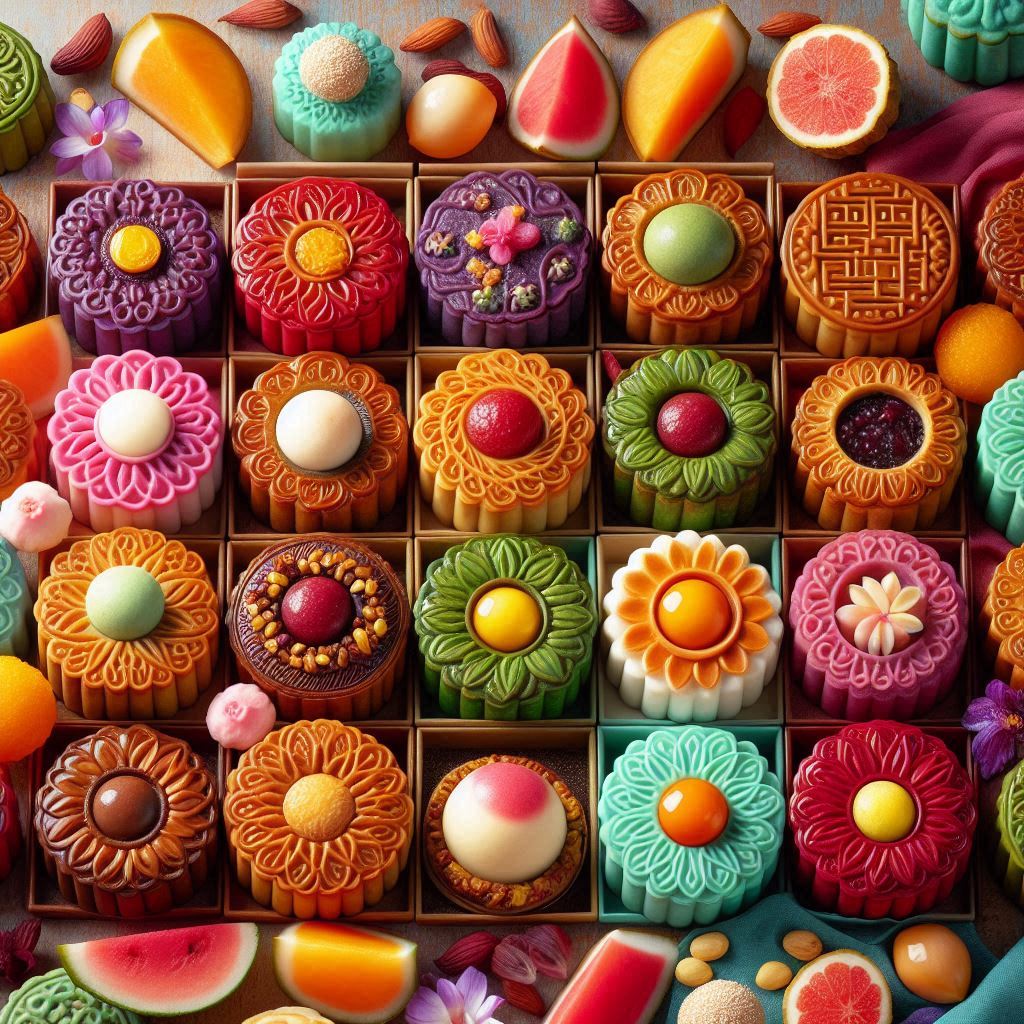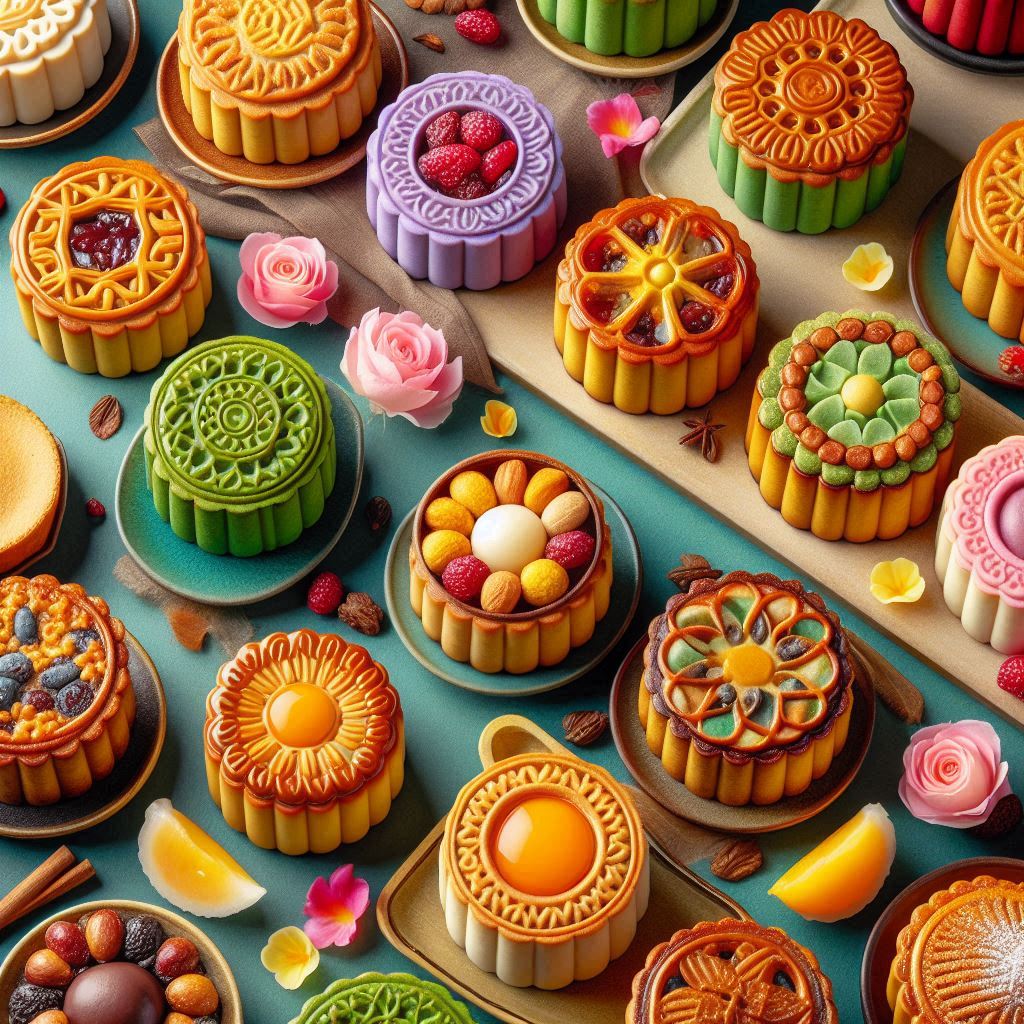中秋節的由來與月餅製作過程
中秋節,又稱為月亮節或團圓節,是華人文化中的一個重要傳統節日,通常在農曆八月十五慶祝。中秋節起源於中國古代的月亮崇拜和秋季祭祀,與農業社會密切相關,象徵豐收和團圓。在中國歷史上,這一天是農作物收穫後,家人團聚慶祝的時刻,並有賞月的習俗。根據傳說,嫦娥奔月的故事也是中秋節的重要背景,嫦娥在服用長生不老藥後飛升至月亮,而她的丈夫后羿每年都會在中秋夜仰望月亮,希望能與她重逢。因此,月亮成為中秋節象徵團圓的核心象徵。
中秋節最具代表性的食物是月餅,象徵團圓和和睦。起源據說可以追溯到元朝時期,當時漢人反抗蒙古統治,利用月餅傳遞秘密信息來組織起義,這也是月餅象徵希望與團結的原因之一。自此之後,逐漸成為中秋節的重要象徵與傳統食品。
月餅的種類隨著不同地區的文化和口味各異,常見的包括廣式月餅、蘇式月餅、京式月餅和冰皮月餅等。廣式月餅皮薄餡豐,以蓮蓉、蛋黃、紅豆沙等為主要餡料,具有甜潤且富有層次感的口感;蘇式月餅則注重酥皮與餡料的平衡,外皮酥脆,內餡常見的是鮮肉或豆沙餡;京式月餅外形較厚重,皮與餡比例相當,餡料常以五仁、芝麻等為主;冰皮月餅則起源較晚,不經烘烤,外皮以糯米製成,餡料通常是水果或奶油,較受年輕人歡迎。
月餅的製作過程繁複,尤其是在廣式月餅中,工藝講究。首先,要製作月餅皮,通常使用麵粉、糖漿、油等材料混合成麵糰,然後將麵糰放置片刻以便製作出有彈性的外皮。接著準備餡料,蓮蓉、紅豆沙等餡料需要精煉過程,確保口感細膩。餡料製作完成後,將其分成小份,並將餡料包裹於麵皮中,最後放入模具中壓製出傳統月餅的形狀與圖案。壓製好的月餅經過烘烤,烘烤時需要多次上糖漿以保持外皮的光澤與口感。最後冷卻後,月餅便可食用或包裝。
月餅不僅是中秋節的美食,更承載著文化和情感的傳遞。在中秋節這一天,親朋好友之間互贈月餅,不僅表達祝福,更象徵團圓與親情。隨著時代的發展,月餅的樣式和口味也在不斷創新,但其背後代表的團圓精神始終不變,成為中秋節中最具代表性的象徵之一。
The Mid-Autumn Festival, also known as the Moon Festival or Reunion Festival, is an important traditional celebration in Chinese culture, typically observed on the 15th day of the eighth month of the lunar calendar. The festival traces its origins to ancient Chinese moon worship and autumn harvest rituals, closely tied to agricultural society, symbolizing both harvest and family reunion. Historically, this day marked the time for families to gather and celebrate after the crops were harvested, with a tradition of moon-gazing. According to legend, the story of Chang’e, who ascended to the moon after consuming an elixir of immortality, also plays a central role in the festival’s lore. Each year on the night of the Mid-Autumn Festival, her husband, Houyi, would gaze at the moon, hoping to be reunited with her. Hence, the moon has become the core symbol of reunion during this festival.
The most iconic food associated with the Mid-Autumn Festival is the mooncake, which symbolizes unity and harmony. Its origins are said to date back to the Yuan dynasty when the Han Chinese used mooncakes to secretly communicate messages to organize a rebellion against Mongol rule. This story contributes to mooncakes being seen as symbols of hope and solidarity. Over time, mooncakes became an important emblem of the festival and a traditional food.
Mooncakes vary in types depending on regional cultures and tastes. Common varieties include Cantonese-style, Suzhou-style, Beijing-style, and snow skin mooncakes. Cantonese-style mooncakes are known for their thin crusts and rich fillings, often featuring lotus seed paste, salted egg yolks, and red bean paste, offering a sweet and layered texture. Suzhou-style mooncakes emphasize the balance between a crispy crust and a flavorful filling, with popular choices being fresh meat or red bean paste. Beijing-style mooncakes are thicker, with equal proportions of crust and filling, commonly using ingredients like five kernels or sesame paste. Snow skin mooncakes, a more recent innovation, are unbaked, with a glutinous rice crust and fillings such as fruit or cream, and are especially popular among younger generations.
The process of making mooncakes is intricate, particularly with Cantonese-style mooncakes, where craftsmanship is key. First, the mooncake crust is prepared by mixing ingredients like flour, syrup, and oil into a dough, which is then rested to ensure the right texture. Next, the filling, such as lotus seed paste or red bean paste, undergoes a refining process to achieve a smooth consistency. Once the filling is ready, it is portioned and wrapped in the dough. The mooncakes are then pressed into traditional molds to give them their distinctive shapes and patterns. After molding, the mooncakes are baked, during which multiple layers of syrup are brushed on to create a shiny, flavorful crust. Finally, after cooling, the mooncakes are ready to be eaten or packaged.
Mooncakes are not just a delicacy of the Mid-Autumn Festival but also carry cultural and emotional significance. On this day, friends and family exchange mooncakes as a way to express good wishes and symbolize reunion and kinship. As time has passed, mooncakes have evolved in style and flavor, yet the spirit of reunion they represent has remained constant, making them one of the most iconic symbols of the Mid-Autumn Festival.

.jpg)

照片:DALLE3
- 1
- 2
- 3
- 4
